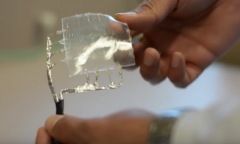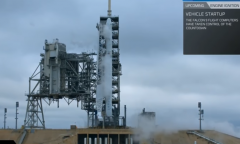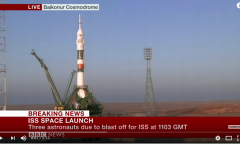By Rose Ver, | March 19, 2017

The launch is the second of the Falcon 9 this year. (YouTube)
SpaceX has launched its Falcon 9 rocket to bring the heavy EchoStar 23 Communications satellite into orbit. Positioned at the Launch Complex 39A of the Kennedy Space Center, the rocket blasted on March 16 after its initial launch was canceled due to high winds.
The launch is the second of the Falcon 9 this year. According to Space, the Falcon 9 rocket soared into orbit after it bolted from the launch pad carrying the heavyweight 6-ton EchoStar 23 spaceship.
Like Us on Facebook
More photos from today's Falcon 9 launch → https://t.co/095WHWMtKp pic.twitter.com/O2RkVlZnak
— SpaceX (@SpaceX) March 16, 2017
The fuel requirement for the launch is so big, and there were concerns about the rocket's recovery. The SpaceX rocket's fuel reserve was consumed such that the Falcon 9 had to come back to the atmosphere without fuel. According to Space Flight Insider, the Echostar 23 communications satellite spacecraft is heavy, and this is to be bolstered into the high-energy geostationary transfer orbit.
Despite the concerns on the fuel, however, the Falcon 9 rocket has been recovered, and the Echostar reached its destination at 22,300 miles or 35,900 kilometers above Earth. The satellite is to be positioned above the equator at 45 degrees west longitude. It will provide communications services including television broadcast services and Internet to South America, particularly Brazil.
The EchoStar 23, which was built by Space Systems/Loral, will be in orbit for 15 years.
-
Use of Coronavirus Pandemic Drones Raises Privacy Concerns: Drones Spread Fear, Local Officials Say

-
Coronavirus Hampers The Delivery Of Lockheed Martin F-35 Stealth Fighters For 2020

-
Instagram Speeds Up Plans to Add Account Memorialization Feature Due to COVID-19 Deaths

-
NASA: Perseverance Plans to Bring 'Mars Rock' to Earth in 2031

-
600 Dead And 3,000 In The Hospital as Iranians Believed Drinking High-Concentrations of Alcohol Can Cure The Coronavirus

-
600 Dead And 3,000 In The Hospital as Iranians Believed Drinking High-Concentrations of Alcohol Can Cure The Coronavirus

-
COVID-19: Doctors, Nurses Use Virtual Reality to Learn New Skills in Treating Coronavirus Patients












